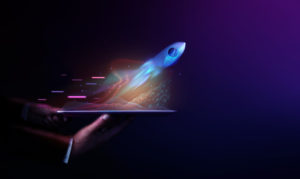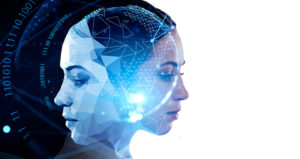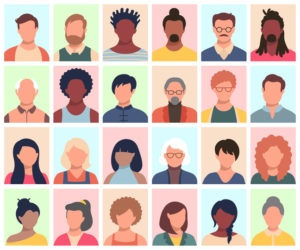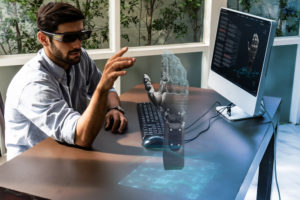Constantly evolving, advances in the tech sweeping across our digital landscape mean there’s always something new on the horizon.
It’s become a bit of an end-of-year tradition here at Ignite, that we have a look at some of the tech trends we can expect to see in the coming year.
So here is it!
Part 1 looks at 5 of the up-and-coming tech trends we can expect to hear more about in 2023. Part 2 will be out later in the week when we’ll have a closer look at 5 more of the tech trends we can look forward to in the new year.

Top Tech Trends. Part 1.
Widespread AI.
AI isn’t a new trend. However, over the past few years, we have seen it become more intricate, with its uses more sophisticated. And in 2023, we can expect even more from AI. It will become a very real presence in organisations across every sector.
Using AI, companies will be able to make strides toward creating ever more intelligent products and services.
Some thinkers believe that AI is on its way to being able to augment nearly every job in every business process across industries. Workers should anticipate working alongside machines in the 2023 workplace.

“Real” Metaverse.
The metaverse refers to an immersive internet, where we can work, play, and socialise.
It’s predicted that by 2030, the metaverse will have added $5 trillion to the global economy. 2023 is estimated to be the pivotal year that will set the trajectory for the next decade.
Augmented reality (AR) and virtual reality (VR) technology will continue to advance next year. Interestingly for the recruitment sector, these trends will help to carve out a “new” working space; one that facilitates radical changes to both interview processes and employment models.
For example, Microsoft and Nvidia are working on metaverse platforms to enhance digital collaboration and immersive meeting environments.
Large organisations are already using metaverse technology like AR and VR to conduct training and onboarding. It’s expected this trend will accelerate in 2023. These virtual world replicas of real-world environments allow employees to carry out tasks without needing to be present in a physical office.

Avatars.
Our Avatar is our online metaverse presence; the one we project as we engage with other users. 2023 will see advances in avatar technology that allow us to look exactly like we do in the real world. Progress in motion capture technologies will even enable our avatars to adopt our unique body language and gestures.
Also on the cards are AI-enabled autonomous avatars that can act as our representatives in the metaverse, even if we’re not logged into the digital realm.

Web3.
Web3 is a new iteration of the World Wide Web. It incorporates concepts such as decentralisation, blockchain technologies, and token-based economies.
This move-on from cloud technologies could help to make our data more secure. For example, if we could decentralise data storage and encrypt that data using blockchain, our information will be safer. We’ll also have innovative ways to access and analyse it.
Regarding token-based economies, it’s anticipated that NFTs (Non-Fungible Tokens) will become more usable and practical in 2023. For example, NFT tickets to entertainment shows might give us access to backstage experiences and memorabilia in 2023. Additionally, NFTs might unlock access to our interaction with many of the digital products and services we buy. They may even go on to represent the contracts we enter with others.

The digital and physical bridge.
Digital twin technology and 3D printing are two of the current components creating the merger between the digital and physical worlds. This trend will continue in 2023.
Digital twins are virtual simulations of the real-world. They could be processes twins, operations twins, or products twins that permit us to test new ideas in a safe digital environment. Every conceivable condition can be simulated without the high risk and cost of real-life experiments.
In 2023, we’ll see even more engineers and designers use digital twin technology in industry, machinery, automotives and healthcare.
After testing in the virtual space, engineers can tweak and edit products before creating real-world replicas using 3D printing technology.

Sounds exciting, doesn’t it?
Come back later in the week for another 5 top tech trends we can expect to see in 2023.





